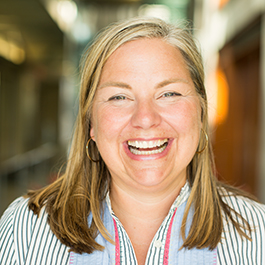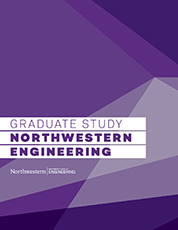Building Community In-Person and Virtually
EDI Co-Director Amy O'Keefe explains why collaboration is critical to the success of any service designer, whether they are working alongside their teammates or through a computer screen.
 Northwestern's Engineering Design Innovation (EDI) program teaches engineers how to address design problems with a human-centered approach. A critical component of that teaching experience is a studio culture that allows students to collaborate with their classmates and work closely with the program's faculty. Not only are they able to learn from one another, but they support each other and build a sense of community.
Northwestern's Engineering Design Innovation (EDI) program teaches engineers how to address design problems with a human-centered approach. A critical component of that teaching experience is a studio culture that allows students to collaborate with their classmates and work closely with the program's faculty. Not only are they able to learn from one another, but they support each other and build a sense of community.
But how do you create a community in a virtual environment?
That was the question Amy O'Keefe had to answer at the onset of the COVID-19 pandemic. Like most educational institutions all over the world, EDI was forced to shift to an online teaching model during the early months of the pandemic. For O'Keefe, co-director of EDI, the challenge was developing ways to take all that's good about the studio culture and bring it online. To achieve that, she applied the human-centered approach she and her colleagues teach their students.
"As a foundation, I made sure everyone was committed to working together to craft and support a vibrant community in our new constraints," O'Keefe said. "I wanted to make sure we were communicating, perhaps more than we would otherwise and even more carefully than usual, and I wanted everyone to show compassion for themselves, their peers, and their faculty."
In O'Keefe's own courses, she used a virtual whiteboard tool that allowed students to interact with one another in real time, as opposed to simply staring at each other in Zoom boxes. When O'Keefe taught studio courses in person, she would open with the class in a circle for a warm-up exercise. For a virtual setting, she used the whiteboard to create a circle of sticky notes. Each class, a student would need to take a note and answer a prompt designed to get them thinking and related to the rest of the course's topic.
If students were needing to generate ideas, O'Keefe might ask them to think of three things they'd make if all they had in their refrigerator was eggs and bread. She also had students answer questions about themselves, what classes they were taking, and where they spend their time when they're not in class, so students could learn about one another and find some common traits.
O'Keefe used the virtual whiteboard for larger class activities as well, allowing students to pair up to identify steps in a customer journey or even to allow students to conduct peer-to-peer workshops, where they learn about a relevant topic and then teach that new knowledge to their classmates.
Culture and community were topics close to O'Keefe's heart long before the pandemic arrived, and they will remain her primary focus as students return to in-person learning. Yes, she wants them to learn to be good service designers, but to do that, they must understand how to work with and uplift those around them.
"Design is a team sport," she said. "It purposefully creates opportunities for meaningful collaboration. As you're navigating uncertainty together, you have to support your collaborators and work through tough challenges. Having that sense of community and supporting each other is really key to being able to design new and innovative experiences effectively."

